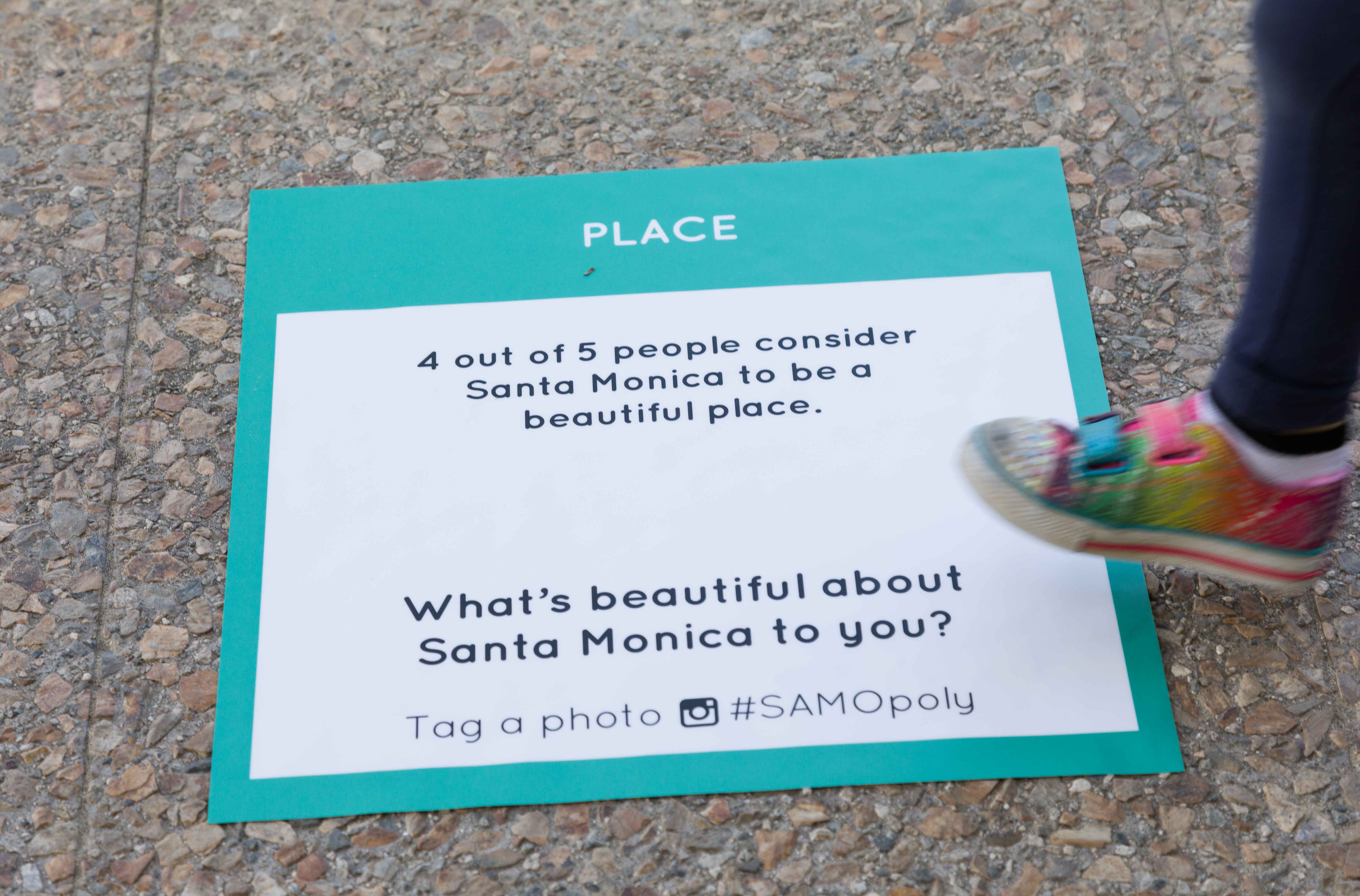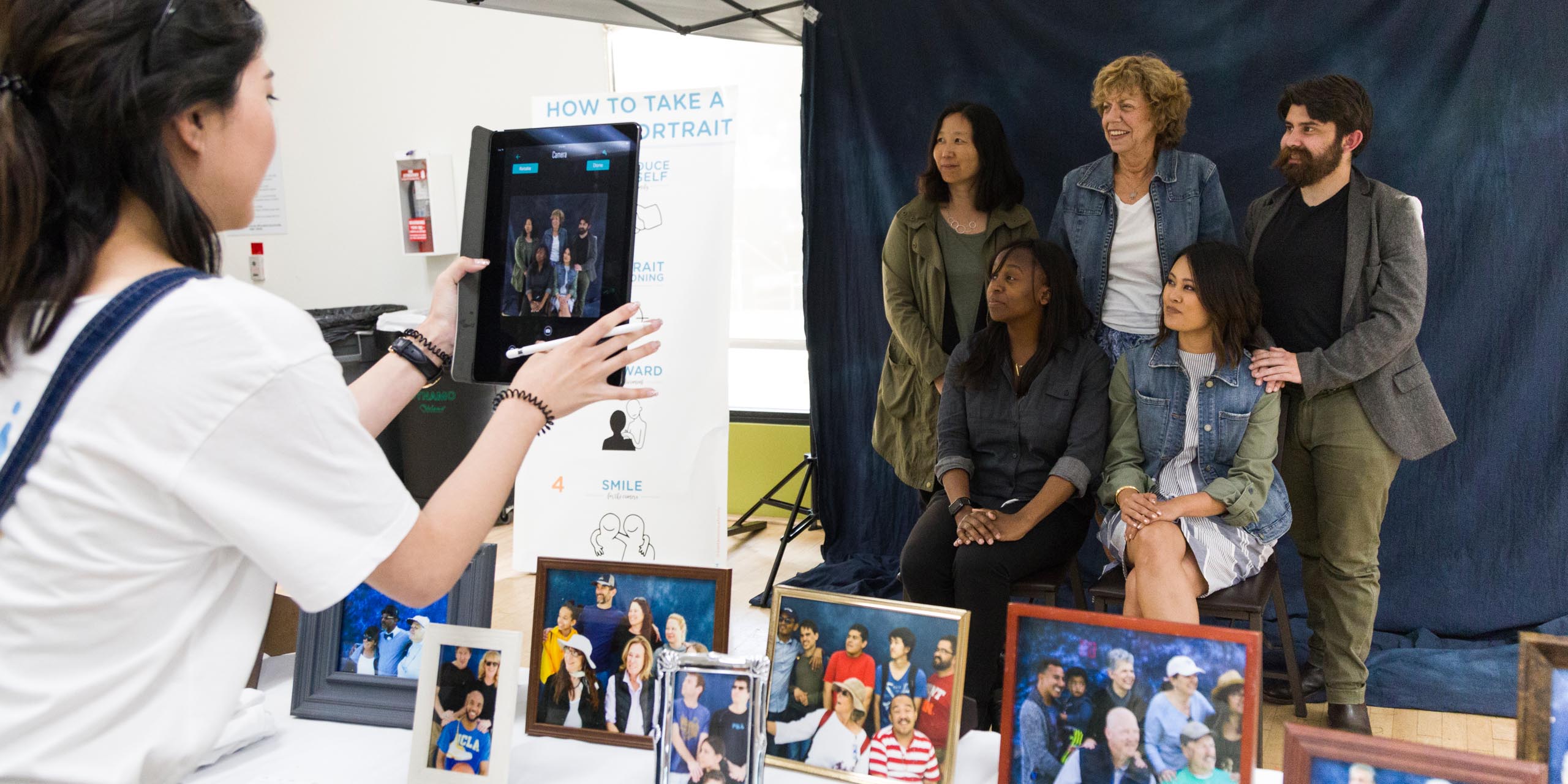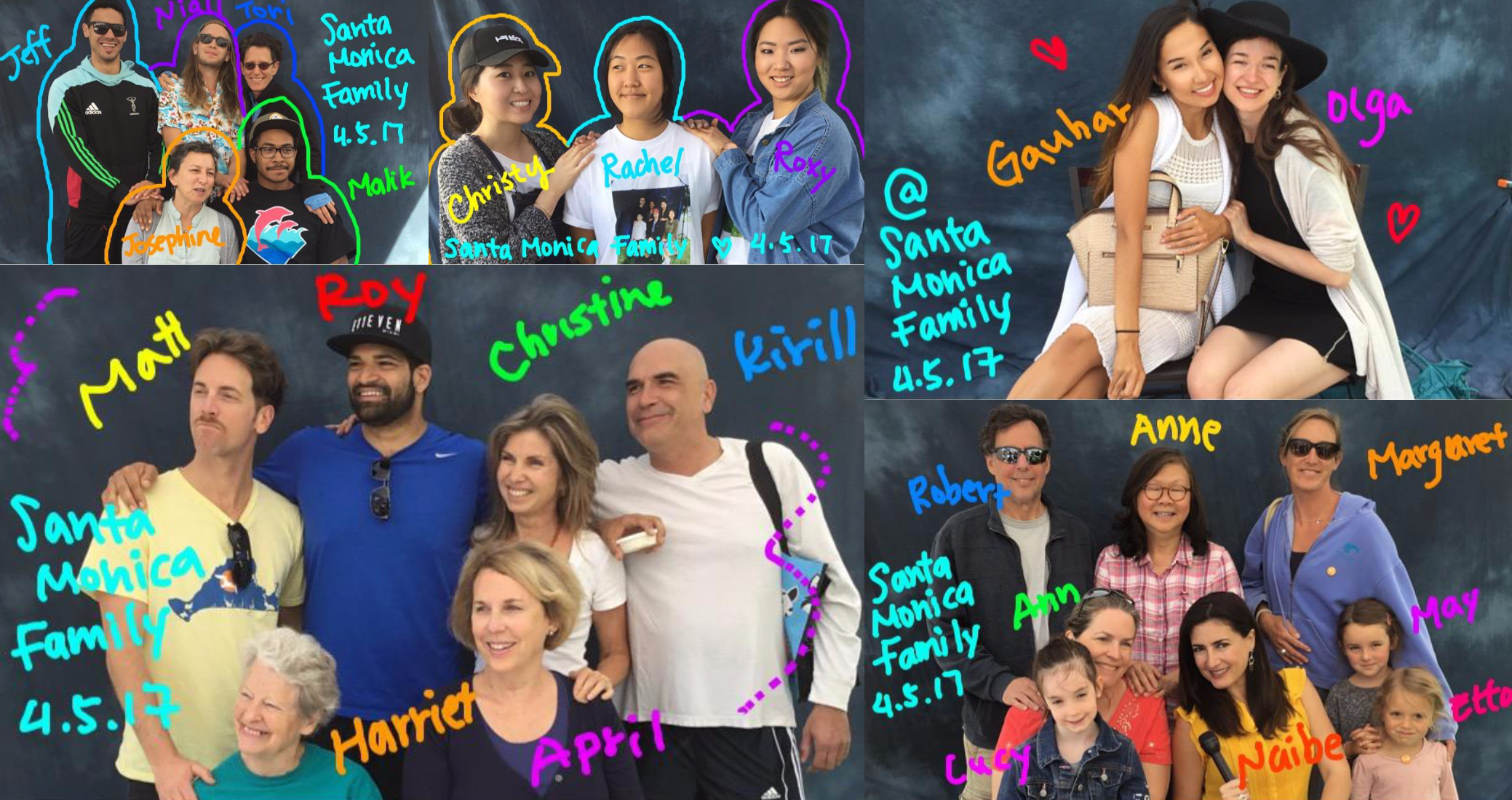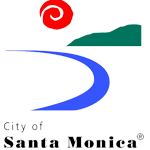Communicating the Wellbeing of a City with Santa Monica
- Public Policy
- Social Entrepreneurship

Spring 2017
Communicating the Wellbeing of a City with Santa Monica challenged ArtCenter students to work alongside Santa Monica civic leaders and other community stakeholders to translate the City of Santa Monica’s pioneering Wellbeing Index into innovative transmedia design campaigns that would communicate a shared understanding of the community’s strengths and needs, encourage collaboration among city leaders and local organizations, and improve a collective sense of wellbeing for all citizens of Santa Monica.
Employing wellbeing data results and field research, student teams designed, constructed and tested conceptual campaigns in real-time with real residents. Teams had immediate feedback to retool and iterate on their concepts. Students drew upon the knowledge of Santa Monica experts to help guide them to create captivating, connective and resonant campaigns for residents of Santa Monica.
Recent Developments
Since the conclusion of the Communicating the Wellbeing of a City with Santa Monica studio in April of 2017, the two final projects, SAMOpoly and Santa Monica Community Portrait have been implemented at several community events in and around Santa Monica. (see events below).
May 14, 2017
KCRW Spring Benefit (Pop-up Pledge Party) at the Annenberg Community Beach House
Santa Monica Community Portrait Group
September 13, 2017
2017 Wellbeing Launch Event at the Water Garden
Santa Monica SAMOpoly Group
October 01, 2017
COAST: City of Santa Monica’s Open Streets Festival
Santa Monica Community Portrait Group
October 14, 2017
Pico Block Party at 18th Street Arts Center
Santa Monica SAMOpoly Group
About Santa Monica’s Wellbeing Project
Around the world, many cities are examining and analyzing its residents’ wellbeing through various metrics that can help shape effective future policy and programs.
In an effort to deepen understanding and improve the quality of life for its 90,000 residents, the City of Santa Monica entered its Wellbeing Project proposal into Bloomberg Philanthropies’ first-ever Mayor Challenge, a nationwide competition to encourage innovation in local government. In 2013, Santa Monica received $1 million in seed money to develop the project which would use data to create a multidimensional Wellbeing Index.
For nearly two years, the City partnered with the RAND Corporation, the New Economic Foundation and a team of international experts in the growing field of wellbeing science to research factors that make a city thrive.
Data was compiled from many sources: quantifiable data about crime and disease rates, parks, education levels and use of transit services and libraries; the City also conducted an online survey to collect information from residents about personal experiences and thoughts on housing, mobility and development among other topics. More than 2,000 residents responded to the survey. Researchers also scanned public commentary on social media outlets to determine attitudes and concerns about money, jobs, economic disparity and other relevant issues.
The City defined wellbeing in six dimensions:
- Place and Planet (How are residents affected by their environment?)
- Outlook (How are residents doing?)
- Community (How strong in the sense of community and civic engagement?)
- Health (How healthy are the residents?)
- Economic Opportunity (Can diverse populations live and thrive here?)
- Learning (Do people have the opportunity to enrich their knowledge and skill sets, no matter their age?)

“Interventions like what the ArtCenter students have done makes the data human. The ArtCenter students were so dedicated, creative and willing to dig into all my data, figure it out and use it. I went to the Farmer’s Market and overheard the Community Portrait students rattling off data to the market-goers; that was amazing. Likewise, when the SamOpoly team did the installation in the park for midterm, a couple asked if it was OK to play the game. Of course it was OK! People wanting to play with data and seeing data as fun and engaging – what else could I want? This really has been a dream come true for me.”
– Lisa Parson, Wellbeing Project Manager/City Manager’s Office
Research and Project Development
The students started the term with a download of the Wellbeing Index from a panel presentation by the team behind the project, including Julie Rusk, Chief of Civic Wellbeing/City Manager’s Office; and Lisa Parson, Wellbeing Project Manager/City Manager’s Office.
Julie and Lisa walked the students through the methodologies and data as well as other efforts by the City. Laura Becker and Allison Ostrovsky, who oversee the City’s public art program, gave the students insights into the arts and use of public spaces. Students also heard from Evan Meyer, the Executive Director of Beautify Earth, an initiative that began in Santa Monica to bring care, art, color and love to cities.
Student teams also went out into the community to conduct random interviews with Santa Monica residents in specific zip code neighborhoods and create a short SnapChat story video. Students asked residents where they lived and what Wellbeing means to them; videos were later combined to provide a collective overview of student research and a glimpse into the people of Santa Monica.
Over a series of weeks, the students continued their immersive field research; they were instructed to look behind the stereotypical images of Santa Monica – the beach, pier and Promenade – and discover the soul of the City through its neighborhoods and special places only locals know. The goal was to find the human voice of Santa Monica and how that corresponds to Wellbeing data.
Each student came up with three initial ideas; through discussions and careful review, two top concepts emerged. Student teams were established and groups continued ideation along with field visits. Additionally, students were in close contact with members of the Santa Monica Wellbeing Index who offered guidance, suggestions and affirmations with the teams’ concepts.
As teams began to prototype their campaigns, they continued to circle back to the six Wellbeing Index dimensions and the challenge of connecting people to data. Students had the opportunity to field test their prototypes in real-time with real residents at Santa Monica events, farmer’s markets and by creating pop-up installations. Students took advantage of the immediate feedback loop from residents by carefully refining their projects.
Projects continued to be developed, shaped and refined; midterm presentations offered the students a chance to share prototypes with their classmates as well as the Santa Monica civic leaders who offered constructive criticism on how to move the concepts forward.
Energized with the feedback, teams worked until the final presentation to flesh out their concepts into full campaigns that could be easily implemented by the City and potentially shared with other cities via toolkits.

“The problem the students were trying to solve, in essence, was how to visualize data. These teams figured out ways to understand, digest and make data real. That’s a difficult task, but bringing together transdisciplinary students seemed to facilitate and accelerate the process. Each of them – product designers, graphic designers, advertising, etc. – was oriented to view and contribute in a unique way that added depth to the concepts.”
– Petrula Vrontikis, instructor
Outcomes
 close
close
SAMOpolyTeam
Read moreBoard Game/Immersive Art Installation/Social Media Platform
Presenting the interconnectedness of data and residents in a fun and playful style, this student team created a three-pronged campaign inspired by a Monopoly-styled board game. The SAMOpoly Board Game portrays the city of Santa Monica with new twists for players familiar with classic table top game. Players can choose from a variety of iconic Santa Monica-themed game pieces: a surf board, a bicycle, Ferris wheel, etc. Local landmarks (radio station KCRW, Santa Monica Library, Santa Monica College, etc.) are color-coded and grouped together with the six Wellbeing dimensions. As players roll the dice and advance their game pieces, they encounter bite-sized Wellbeing data tidbits that can give consequences (pay a parking fine) or rewards (go to the Farmer’s Market). Additionally, mimicking wellbeing as multi-dimensional, one player’s turn has the possibility of affecting other players in both positive and negative outcomes. In the end, the winner is the one with the highest Wellbeing Index points. The SAMOpoly concept expands into an immersive environmental intervention, demonstrated around the Virginia Avenue Library and Park. Colorful therma-prints are cleverly positioned onto existing infrastructure to convey data/statistics, start conversations and elicit a call to action/or thinking about Wellbeing Index elements. Curious walkers discover eye-catching artwork that compliments architectural elements: a large concrete parking barricade becomes a voting box that contains stats on Santa Monica’s voting habits along with a call to participate in elections. A park bench simulates a car that communicates data about driving and the benefits of carpooling. Footsteps direct walkers from one experience to the next which ends at a large framed reflective mirror, reminding participants that they are the story of Santa Monica and they can see themselves in the data. As walkers interact, they can share their SAMOpoly experience via social media via Instagram. Joining the social community, residents snap and tag photos with the SAMOpoly hashtag; they also can respond to Wellbeing prompts such as: Tell Us Your Favorite Relaxation Activity or Tell Us How Your Housing Can Be Improved. Whether they are discovering the Wellbeing Index issues by playing a board game, walking through an immersive experience or interacting on social media, residents are encountering the data as meaningful and are learning ways to connect and make Santa Monica a better place to live, work and thrive.
 close
close
Santa Monica Community Portrait Team
Read morePhotographic Connections/Experience
With a goal to brand Santa Monica as a city that brings people together and establish a sense of belonging and community, this student team expanded the idea of the traditional family portrait to encompass the larger extended family of Santa Monica residents. Inspired by a data point that revealed social cohesion and connection is weak among Santa Monica residents-only 56% of Santa Monicans feel they can rely on their neighbors, as opposed to 80% nationwide-the team ideated how a real-life experience could demonstrate the Wellbeing Index. Setting up a temporary photographic studio at high-volume events (downtown Santa Monica’s Farmer’s Markets, Santa Monica Park’s Day Festival, etc.) students encouraged complete strangers to pose with one another as if they were family members. Photo models engaged first with awkwardness that spun into good-natured responses as they introduced themselves to their photo family members. Family portraits were uploaded to an Instagram account @SantaMonicaFamily for social media sharing which also linked to the Wellbeing Index website. While onsite, residents/family members were given a Polaroid photo of their images with marked-up illustrations/stickers as a memento of the experience. Residents filling out consent sheets could also opt to continue the friendship with their photo family by exchange contact and/or social media information. Hand-out materials onsite described the project and included line-drawing versions of six portraits which were translated into graphic representations of the six Santa Monica Wellbeing dimensions, furthering the idea that statistics reflect not just numbers but real human beings. Students considered how to further expand the project in other transdisciplinary methods: framed photos could be displayed around Santa Monica in prominent locations to create a citywide art/photo gallery; a permanent location in the city could be the photographic backdrop inviting others to take spontaneous Awkward Family Photos with strangers. As a result of their three public engagement sessions, students devised guidelines on how others could replicate and easily implement the process. They outlined duties (recruiter, photographer, videographer, illustrator, etc.), materials and cost breakdown for the set-up, and suggested verbiage on how best to interact with the public. The simple act of meeting one another before a camera lens became a gentle reminder that Santa Monicans have a familial bond and they can invest in one another and consider each other strangers no more.
“I’m in advertising and have done a lot of work crafting ideas, filming videos and telling stories – but that’s usually for companies selling something. I wanted to do something that would have an impact on a community; that’s what attracted me to this project in the first place. I know how to communicate and tell a story for a brand, and with this studio, we collectively asked, “Why can’t we do the same for the Santa Monica brand? Or for the Wellbeing brand?” The same principles apply: how to creatively communicate the story of the brand for the most positive impact.”
– Lucas Kelly, Student, Community Portrait Team
Video Content

“What really impressed me about this studio was that it was very engaging, multi-dimensional, and structured, but it also gave us the chance to share our knowledge and to learn from the fresh eyes of the students. Co-creating was really exciting for us. The process energized us; it was fun! We never could have imagined an Awkward Family Photo or a Board Game. This creative engagement had such unexpected, delightful and smart outcomes.”
– Julie Rusk, Chief of Civic Wellbeing/City Manager’s Office

